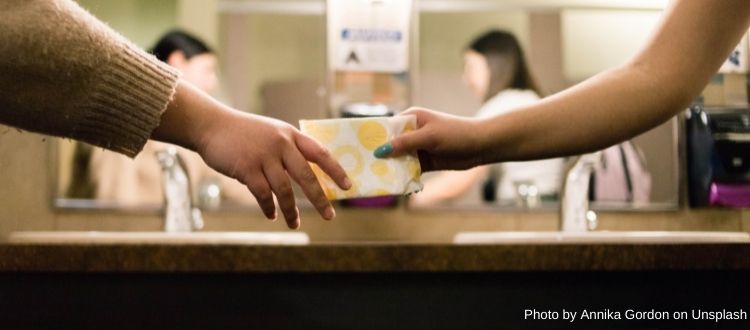Prisons, Periods, and the Patriarchy
 |
| Mrittika Howlader WVE Fellow |
Sanitary products have become weaponized. Most incarcerated folks are unable to fulfill basic needs due to inconsistent and inadequate products, both in terms of quantity and quality. Systemic inequities in correctional facilities, like the inability to get period products, are critical in both addressing a healthy and safe quality of life and reproducing the dangerous hierarchies of power outside of prison walls.
First and foremost, there is a myriad of factors that go into how many sanitary products an individual may need throughout the course of her cycle. One may need anywhere between 3-6 tampons a day, switching out every 3-5 hours –– all of which is highly dependent on the absorbency of the product used and how heavy the period is. As for pads, one may need anywhere between 3-5 pads a day, switching out every 4-8 hours –– again, incredibly dependent on those aforementioned factors. *Menstrual flow, duration, and discomfort can also be impacted by health conditions, such as Polycystic Ovary Syndrome (POS), Dysmenorrhea (severely painful cramps), Uterine Fibroids, Endometriosis*
Despite the facts, only 54% of survey respondents in a New York prison said they did not receive enough pads each month according to a study done by the Women in Prison Project of the Correctional Association of New York. This number could very well be an underestimate because of how stigmatized conversations around menstruation are –– folks could have said they were satisfied with the amount so as not to be embarrassed about an issue that is already so disgraced in society. In fact, the Department of Correctional Services (DOCCS) provided each menstruator with only 24 pads per month, which, as I mentioned above, is not enough to adequately manage an “average” period. This means that when folks run out of menstrual products, they must either improvise and utilize incredibly substandard materials, such as notebook paper, as substitutes for hygiene products that might result in bacterial infections, toxic shock syndrome, sepsis, and even death — or people may put themselves at the mercy and convenience of male prison guards who will manipulate already vulnerable menstruators into doing sexual favors for pads and tampons. Since 40% of guards in female state prisons are male, these dangerous situations are not hypothetical whatsoever. Colin Akparanta was just one of many corrections officers who was accused of sexually abusing female inmates in exchange for scarce hygiene products in 2020. This is not to say that the quality of the pads incarcerated people receive is sufficient either. They are typically provided with pads that are “wingless and low-absorbency,” which means that they often need to put on multiple pads to protect their clothes, but also to avoid humiliation. What’s more, the general hygiene products they get are ones “you would never buy outside of the carceral system,” as said by Kimberly Haven, someone who was formerly incarcerated and is now a menstrual equity advocate.
RACE AND GENDER IMPLICATIONS
Due to systemic and institutionalized racism, Black women are two to three times more likely to be incarcerated than white women and Latinx women are 69% more likely to be imprisoned than white women. Menstrual equity and reproductive justice within the carceral system disproportionately affect Black and Brown women; proper justice needs to be attended to the intersectionality of the oppression. Furthermore, navigating menstruation is already difficult for individuals who identify as women; thus, it is crucial to think about these injustices affect trans and non-binary incarcerated people.
FUTURE IMPLICATIONS
38 states have failed to require states to provide menstrual products to incarcerated folks. To add insult to injury, the states that do have the mandate find loopholes to sidestep the law; they either provide no products in any capacity or only provide products that are subpar and of inadequate quality. This must change now.
One way to support these folks is to support the Menstrual Equity for All Act, which you can read more about in one of our blogs –– this Act reaffirms the notion that menstrual products are not luxury items, but bare necessities. Another way to get involved is by supporting organizations that ground their work in defending such gendered violence like The Period Project and The Pad Project. Here is an additional resource you can use to see a collective of Black-led menstrual equity organizations.






